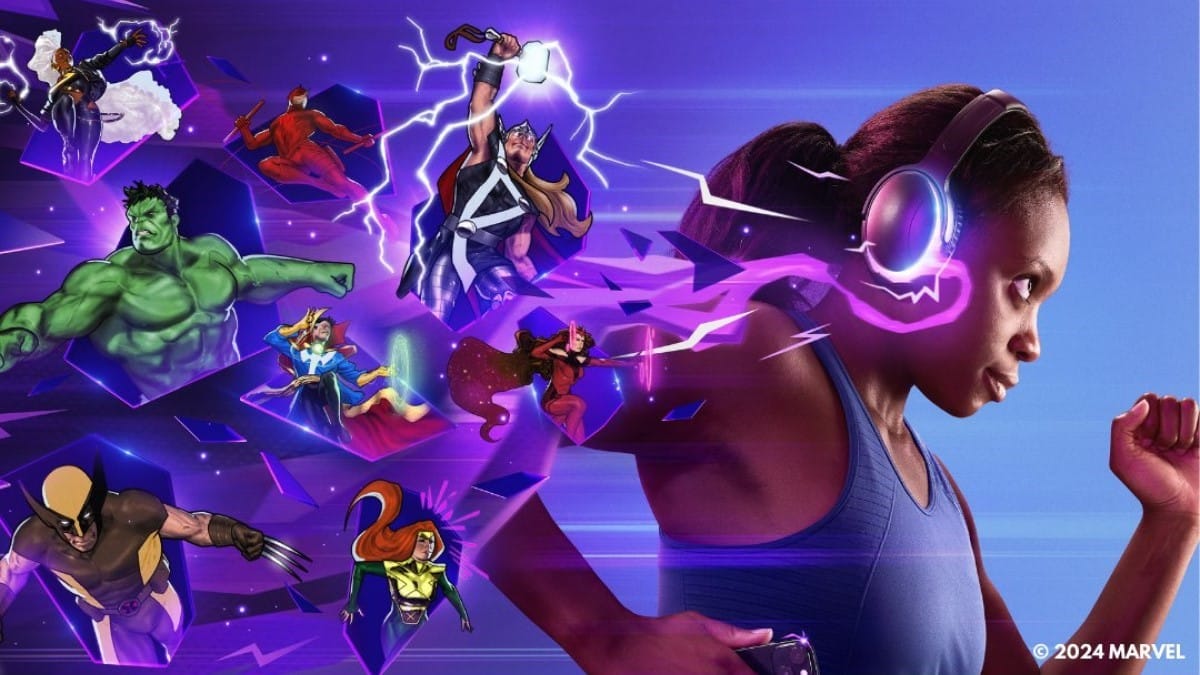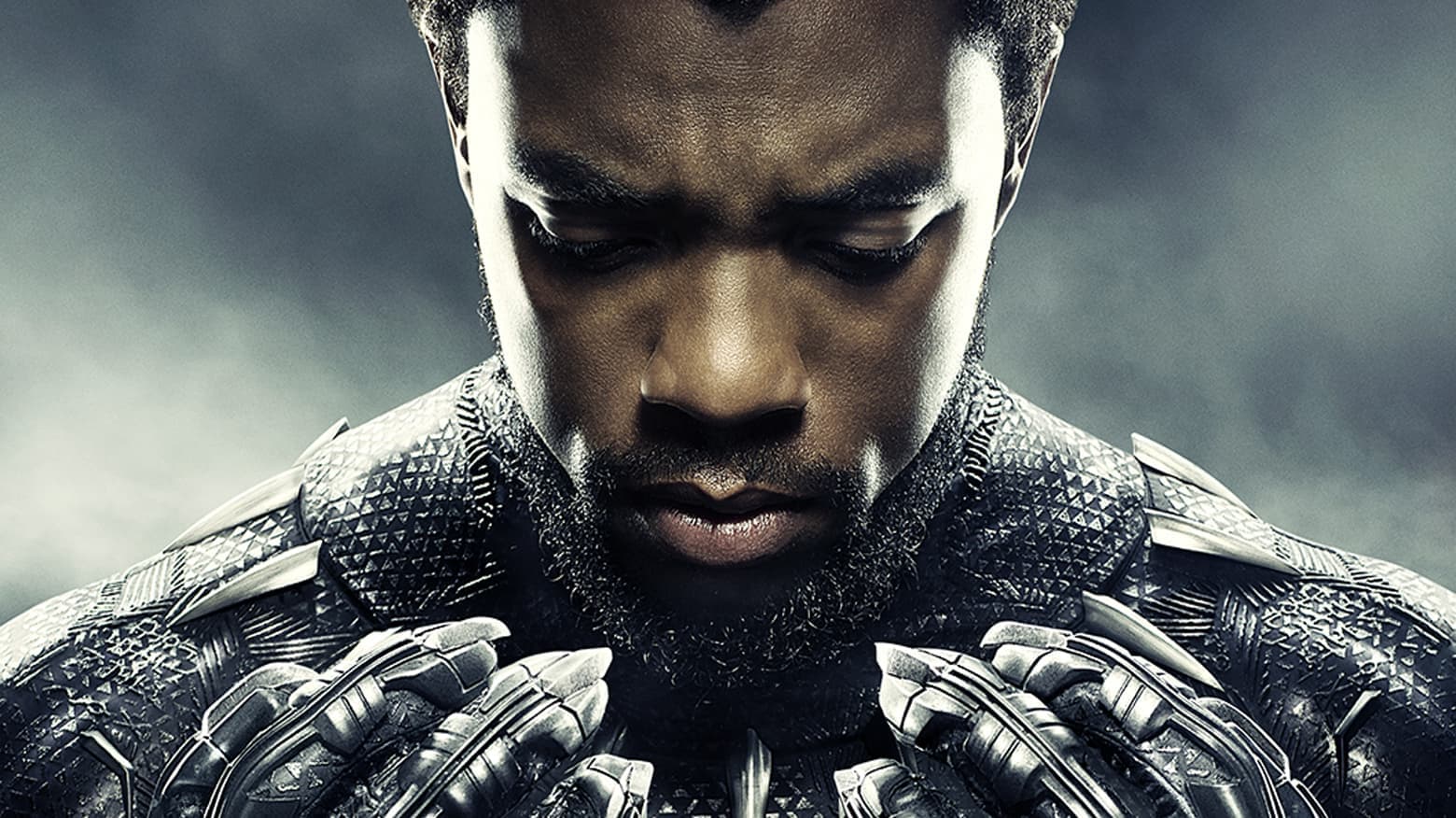I have walked over 50 miles for this article, and I plan to walk many more. In that time, I have learned a few things.
Like how I can outrun neither Sentinels nor dinosaurs, and that perhaps it’s best to turn Chases Mode off to spare me the humiliation of finding out what else I can’t outrun. Or how to walk 3 miles indoors when it’s 104 degrees outside, without getting dizzy from all the turnarounds. Most of all, I have learned that I am terribly, terribly out of shape.
But hey — that’s what Marvel Move is for.
The App

Let us get one thing out of the way by telling you what Marvel Move is not. It is not an exercise program that guides you toward being more in shape. It offers no advice for how fast to run (or walk), how far you should go, or even how regularly you should move. It does not offer fitness expertise, nor does it claim to.
Marvel Move is a subsection of an app called ZRX, an app that gives you points for moving, and through that movement, you unlock new stories. It’s exactly the kind of app I want, one that lets me (literally) set the pace, but also one that gives me rewards for when I do actually get going. What’s the point of counting my steps if I’m not going to be accumulating arbitrary points for it?
I’d been playing Pokemon Go for a long time for the same reasons, but the game got to be a little too complicated. There was too much to do, and too much time wasted on battling and Pokemon capturing that really slowed my walk. ZRX simplifies things. The app syncs with your smartwatch, if you have one, or simply uses GPS if you’re walking outside. You determine how far you want to move, or for how long. Whether you want the run to include Chases or not (more on that later). Whether you’re walking indoors, on a treadmill, or out there in the real world. Is it technically possible for you to find a way to mess with the settings enough that you could unlock new chapters while barely moving at all? Yes, yes it is. This app’s an aid, but it’s not your boss. Use it as you like.
I’m choosing to walk — indoors when it’s too hot, but outdoors when I can. The app lets you use an external music player (though you can purchase music from the app itself) as you walk, and smoothly pauses that player when you’ve unlocked a new chapter, playing it through before resuming whatever podcast or song you were listening to earlier. It’s an important feature, so you’re not pausing your run to mess with your phone each time you unlock something new. Importantly, you can pause your run at any time and resume it later. The app doesn’t penalize you for doing so, because sometimes life just gets in the way of things.
The settings don’t respond perfectly. Several times I’ve set new chapters to release once every kilometer, only to have them all release every few minutes or so. Sometimes I’ve had the opposite happen, trying to go on a shorter run only to find myself extending it because the story segments were coming out so slowly. Suffice it to say that, like the shower taps in a new apartment, there’s going to be some trial and error involved before you figure out what works best for you.
ZRX started as Zombies, Run!, whose story I enjoyed in the free trial, but whose subscription (Rs. 690 a month, or about $9) was a bit beyond my means (Guys, I am not doing well. Buy me a Ko-Fi, why don’t you?). The app includes not just the original Zombies Run! however, but also a sci-fi series called Venture and, of course, Marvel Move, the last of which Marvel kindly gifted me a four-month subscription for. Subscribing to one doesn’t mean subscribing to the others, but I’m fairly happy with my Marvel stories for now — there are eight of them, at the moment, each with a significant number of episodes of their own, and more being updated every week.
It’s not just stories that you unlock with your run, however. There are also a number of little collectibles to be found, that add background to the story, or just work as trophies for your in-game shelf. As someone who’s been playing video games for a long time, filling an app with dozens and dozens of little unlockables? Yeah. I’m going to go the extra mile for that.
X-Men: Age of Orchis

Marvel Move recommends you start with a Thor and Loki story, which has both a story mode and a 5K training mode — but given the end of the Krakoan Age we’re going through, I leapt at the chance to get in a few more Krakoan stories with Age of Orchis. This was written by one of the Krakoan era’s architects, Tini Howard. I am about halfway through, and it’s been nothing short of delightful.
Age of Orchis may be the only medium outside comics to feature stories set in the Krakoan age, and as such, the early episodes have a lot of heavy lifting to do — introducing the whole concept to someone who may not know much about the X-Men, much less Krakoa. It does an admirable job of this — there is an overwhelming amount of canon to introduce, but with this story broken up into 14 chapters (each of which is broken down further into five sub-chapters), Age of Orchis takes its time introducing things at a gentle pace. Where possible, canon is simplified — Beast, for example, is a lot closer to the friendly genius people may be familiar with from the movies and the animated series than the war criminal of the Krakoan age. Wolverine (Christian Sloan) may hint at feelings for Jean (Kym Miller), but they’re “definitely just friends, though” — no hint of Frost-Summers-Grey-Howlett romantic entanglements in this story.
The story places you in the shoes of an unnamed Runner (or, as Wolverine will frequently call you, “Bait”), discovering your mutant abilities while attending an outdoor Krakoan event. You soon get caught up in an Orchis attack and find out that behind the scenes, there’s something going on that’s a lot more … Sinister. During your adventures, you will travel from New York to Krakoa, the Savage Land and even the future, using your speed and mutant ability of “an uncanny sense of direction” to stay alive, and maybe save mutantkind while doing it.
Age of Orchis’ storytelling style is a bit of a cross between an audio drama and a video game. It’s got quite a cast of characters, and marvelous sound design — enough special effects to immerse you in the story being told, whether it’s Sentinel blasts, the laughter of children playing on Krakoan fields, or the Blob serving you a drink from the Green Lagoon. It also has the awkward problem video games have when you, the game’s protagonist, does not have a voice but the game still wants to make sure you feel included. Many instances of characters asking “you” a direct question before immediately saying, “Never mind that, we need to focus on this new thing!” — or, this being X-Men, Jean will simply read your mind.
I compare this to a video game not because there’s much of a play element involved — the only thing you need to do is keep moving — but because there is no other medium where you’re asked to earn the rest of the story. This is not a story you can just binge through when you’ve got the time, and it wants to make you feel like an active participant in its unfolding. In fact, one of the most entertaining parts about the writing is the way it’s constantly coming up with new, story-related excuses to keep moving. Sometimes, Sentinels are running after you. Other times, you’re testing your new super-suit, or taking a lap around the island to get your bearings, exploring hidden ruins, or using the kinetic energy of your movement to unlock energies within a device on your wrist that unlocks time travel. The sheer variety is impressive.
Also impressive is the cast. This audio adventure might be written to welcome newcomers, but it does not shy away from introducing you to as many X-Men as it can cram into 14 episodes. New voices are introduced nearly every episode, all excellently performed. It can be overwhelming, in an audio adventure with no third-person narration, to help a listener keep track of who is who when all you have to go by are their voices and accents, but Age of Orchis manages to do so.
Where the story really shines, though, is in its smaller moments. Beast (Murray Farnell), musing about the beauty of nature in the Savage Land. Glimpses of the future, showing how humans gave up most of their freedoms too when they allowed fascism to deal with the “mutant threat.” Logan, the ever-gruff, ever-snarling grump, softening up and playing with Krakoa’s children, much to their delight. And then of course, there’s Jubles and the Bamf. Oh, Jubles and the Bamf — Marvel Move is worth the subscription for this part alone.
Jubles and the Bamf

Age of Orchis does not automatically move from one chapter to the next. Each chapter is meant to encompass one workout, so if you’ve finished a chapter but still have a few miles left to go, you enter Radio Mode. Radio Mode works much the same as the chapter segments, only there are about 30 of them, and these story segments are only tangentially related to the main story.
For Age of Orchis, Radio Mode features the radio broadcast of Jubilee (Crystal Lee) and Nightcrawler (Travis Clark), live from Krakoa. Written by Jessica Wright Buha, it’s quickly become one of my favorite stories to have come out of the Krakoan age. By being “bonus” content unrelated to the main story, it manages to be freed of the one thing nearly all superhero stories require: the need for an action scene.
Jubilee and Nightcrawler simply get to talk — about their lives, both on and off Krakoa. To joke around, to play off each other with truly wonderful chemistry. We get to see Nightcrawler’s anguish at not getting a part in a local Shakespeare production, and hear a truly moving rendition of a speech by The Tempest’s Caliban. We hear Jubilee talk about trying to balance having a love life while raising her son, Shogo. We hear the two of them laugh over prank wars, bond over their respective family traumas, and discuss what it truly means to live life — day to day — on an island that doesn’t even have grocery stores. More importantly, they talk about what it means to live in a nation that has not yet figured out what it means to be a nation. Whether it can have a shared culture, what that would look like and whether that’s something anyone on the island even wants.
Moments like this in comics are few and far between. We get crumbs’ worth of character development in between the high-stakes action, the intrigue and the fighting. Every once in a while, a downtime issue will happen between story arcs to give us a brief look into how our favorite characters are dealing with their emotions, but then it’s back to business as usual. Granted, when you’re reading superhero comics, that’s just the kind of thing you should expect; no one’s making a secret of where the genre’s priorities are. But that doesn’t mean you don’t get attached to the characters you’re reading about all the same, and wish for more.
With Age of Orchis’ Radio Mode, more is exactly what you get. About 30 segments’ worth of stories focused on the kinds of questions the entire Krakoan era only scratched the surface of, and Lee’s and Clark’s voices sell a wide range of emotions and stories that make this some of the best appearances of these characters across any Marvel medium (And ye gods, there are a lot). I have definitely extended my walks by a mile or two just to hear more of their stories.
In that, at least, Marvel Move is highly successful at what it sets out to do. I have walked more regularly in the past few weeks than I have in the past two years of me owning a smartwatch, which I got with the express purpose of walking more. I have gone farther, and moved faster, all to get to the next part of the story, which has done far more for me than simple walks with audio books have done. There is a lot to be said for gamifying activities that one might be reluctant to do — and so far, Marvel Move has not given me a reason to slow down.
Armaan is obsessed with the way stories are told. From video games to theater, TTRPGs to comics, he has written for, and about, them all. He will not stop, actually; believe us, we've tried.






